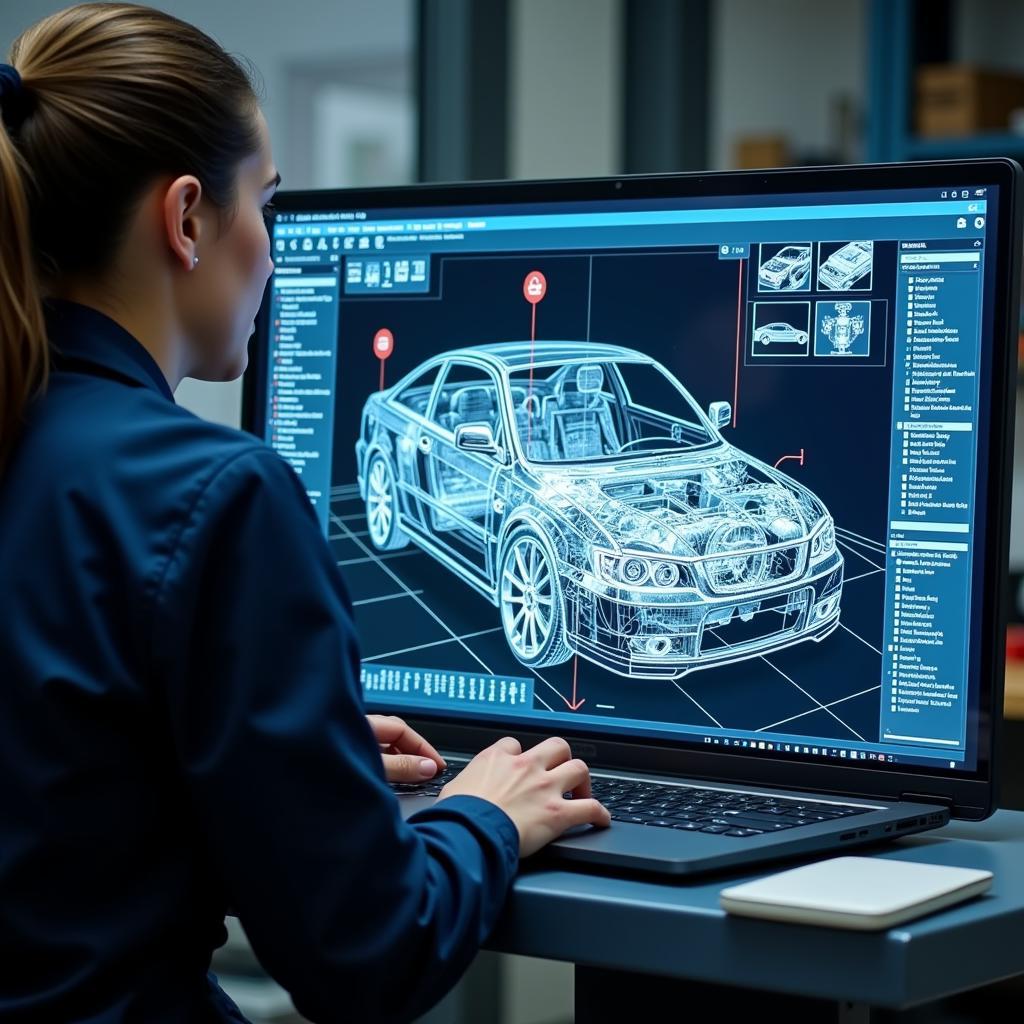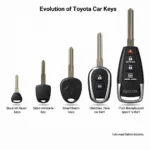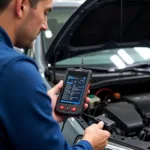Car diagnostic drawing plays a crucial role in understanding the complexities of modern vehicles. It’s no longer enough to just know how to turn a wrench; today’s automotive technicians need to be fluent in the language of schematics, wiring diagrams, and component layouts. This article will delve into the importance of car diagnostic drawing, explore different types of drawings, and discuss how to effectively utilize them for accurate and efficient vehicle repair.
Decoding the Visual Language of Auto Repair: Car Diagnostic Drawing
Modern vehicles are sophisticated machines, packed with intricate systems and electronic components. Troubleshooting these systems requires more than just a hunch; it demands a precise understanding of how everything is connected and interacts. This is where car diagnostic drawing becomes essential. These drawings provide a visual roadmap of the vehicle’s internal workings, allowing technicians to pinpoint the root cause of a problem with greater speed and accuracy. They offer a universal language that transcends the complexities of different makes and models, offering a clear and concise representation of the vehicle’s anatomy.
Imagine trying to navigate a complex city without a map. Similarly, attempting to diagnose a car problem without a proper diagnostic drawing is like working in the dark. These drawings illuminate the intricate web of wires, sensors, and components, guiding technicians towards the source of the malfunction. They are the blueprints of the automotive world, providing the necessary information to understand, diagnose, and repair complex vehicle systems.
Types of Car Diagnostic Drawings
There are several types of car diagnostic drawings, each serving a specific purpose. Understanding the different types is crucial for effective troubleshooting. Some of the most common types include:
- Wiring diagrams: These drawings illustrate the electrical connections within the vehicle, showing how power flows through various circuits and components.
- Component location diagrams: These diagrams pinpoint the exact location of various components within the vehicle, saving valuable time during the diagnostic process.
- Vacuum diagrams: These diagrams show the routing of vacuum lines, which are crucial for various engine functions, including emissions control and braking systems.
- Hydraulic diagrams: These illustrate the flow of fluids within hydraulic systems, such as power steering and braking systems.
Each type of drawing provides a specific perspective on the vehicle’s inner workings, allowing technicians to piece together a complete picture of the problem.
Utilizing Car Diagnostic Drawings Effectively
Knowing how to interpret and utilize car diagnostic drawings is paramount for efficient troubleshooting. Here are some key tips:
- Identify the correct drawing: Ensure you are using the correct drawing for the specific year, make, and model of the vehicle.
- Understand the symbols: Familiarize yourself with the standard symbols used in automotive drawings.
- Trace the circuit: Follow the path of the electrical current or vacuum/hydraulic lines to pinpoint the problem area.
- Cross-reference with diagnostic trouble codes (DTCs): Use DTCs from the vehicle’s onboard diagnostic system in conjunction with the drawings to narrow down the possibilities.
By combining these techniques, technicians can effectively leverage car diagnostic drawings to identify and resolve vehicle issues quickly and accurately.
The Future of Car Diagnostic Drawing
With the increasing complexity of modern vehicles, car diagnostic drawing is evolving. Digital platforms and augmented reality tools are emerging, offering interactive and dynamic visualizations of vehicle systems. These advancements are enhancing the diagnostic process, making it faster and more intuitive for technicians.
“The integration of digital technology with car diagnostic drawing is revolutionizing the way we approach vehicle repair,” says John Smith, Lead Automotive Technician at Advanced Auto Solutions. “These tools allow us to see inside the vehicle in a way that was never before possible, leading to more accurate diagnoses and quicker repairs.”
 Car Diagnostic Drawing on a Digital Platform
Car Diagnostic Drawing on a Digital Platform
Conclusion
Car diagnostic drawing is an indispensable tool for anyone working on modern vehicles. From understanding basic electrical circuits to diagnosing complex electronic systems, these drawings provide the visual roadmap necessary for accurate and efficient repair. By mastering the art of interpreting and utilizing car diagnostic drawings, technicians can stay ahead of the curve and effectively tackle the challenges of today’s automotive landscape. Understanding car diagnostic drawing is no longer just a skill; it’s a necessity.
FAQ
- What is a car diagnostic drawing? A car diagnostic drawing is a visual representation of a vehicle’s systems, components, and connections.
- Why are car diagnostic drawings important? They are crucial for understanding and troubleshooting complex vehicle systems.
- What are the different types of car diagnostic drawings? Common types include wiring diagrams, component location diagrams, vacuum diagrams, and hydraulic diagrams.
- How do I use a car diagnostic drawing? Identify the correct drawing, understand the symbols, trace circuits, and cross-reference with DTCs.
- Where can I find car diagnostic drawings? Service manuals, online databases, and specialized software often provide access to these drawings.
- Are digital car diagnostic drawings becoming more common? Yes, digital platforms and augmented reality tools are increasingly being used for car diagnostics.
- What are the benefits of using digital car diagnostic drawings? They offer interactive visualizations, making the diagnostic process faster and more intuitive.
Need help with car diagnostics? Contact us via WhatsApp: +1(641)206-8880 or Email: [email protected]. Our 24/7 customer support team is ready to assist you.


